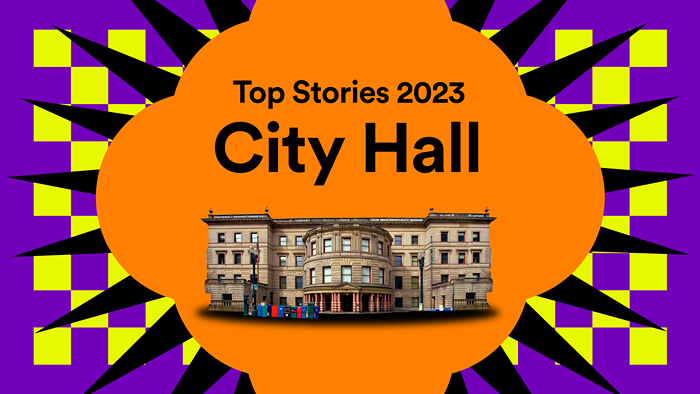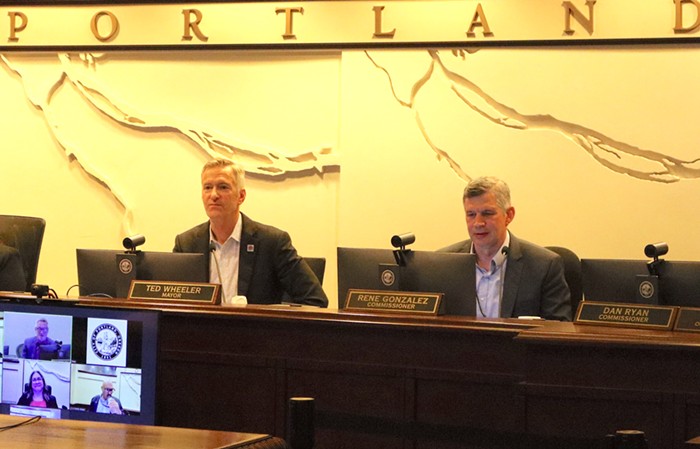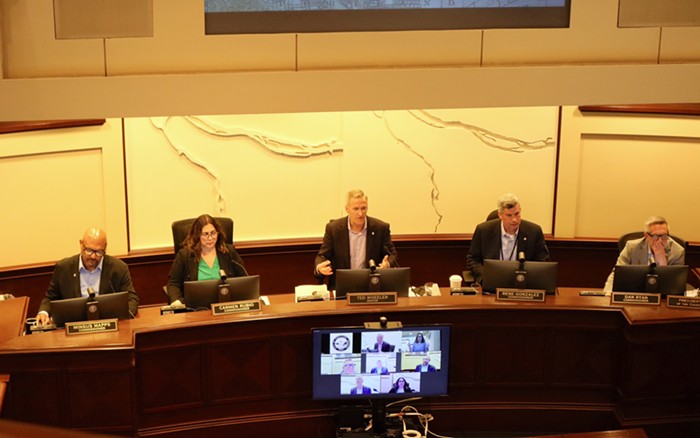
When Portlanders flooded downtown streets in the early summer of 2020 to protest the murder of George Floyd and other examples of police violence against Black Americans, they were joined by a triumphant elk.
Specifically, the Thompson Elk, a 120-year-old slender bronze elk statue perched atop a marble fountain that once quenched horses’ thirst. The elk, standing in the middle of SW Main St between SW 3rd and SW 4th, quickly became a symbol of the growing resistance on Portland’s streets. Some activists, wearing gas masks and toting protest signs, proudly posed for photos atop the elk; others decorated the elk’s antlers with homemade garlands and glow sticks. Votive candles, flowers, and handwritten notes soon piled up at the statue’s base turning the former horse trough into a memorial to the lives lost to police violence.
Unlike the towering government buildings near the nightly protests, the elk did not symbolize the city’s flawed criminal justice system or elected officials. With its back turned away indifferently from the city’s police headquarters and federal courthouse, it became a figurative ally (and, occasionally, a literal shield) to those who demanded an overhaul of the criminal justice system and were answered with police gas and munitions.
Two years later, however, the elk’s allegiance appears to have changed sides. As the memories of 2020 fade—at least for some—Portland’s power brokers have taken it upon themselves to rebrand the Thompson Elk. Their hope is that the elk will cease to be a symbol of resistance to police brutality, and instead represent the perseverance of the status quo in the face of pesky protests that sowed seeds of discomfort in Portland’s more privileged class.
The elk statue was removed from its pedestal in early July 2020. Unlike many statues in cities across the US, the statue was not torn down because it served as a tacit approval of slavery or a five-star review of colonialism. Instead, city workers removed the elk after long nights of intense demonstrations left it damaged from graffiti and charred with soot from fires at its base. The landmark’s base was reduced to an empty fountain, then an ad-hoc firepit. City workers removed most of the remaining fountain within the month.
In February, the city announced that the elk, having been cleaned up, would return to its original spot, though it would now be accompanied by a smaller stone base. According to the city’s transportation bureau, a smaller base will give city buses more space to squeeze around the reinstated elk, and make room for a new bike lane to be added to the busy street.
Some rejoiced at news of the elks’ return. Others, confusingly, characterized the details of its return as a sign of defeat.
People for Portland, a business-led, dark-money funded organization intent on policing homelessness, accused the city of “rewarding vandals” by not returning the elk with its original base. Not long after, City Commissioner Dan Ryan, dramatically declaring that the elk was the “soul of the city,” pledged to advocate for the return of the original fountain, claiming the “healing” of Portland depended on it.
The fawning over this statue, whose oddly proportioned body was once characterized as "a monstrosity of art," caught on in City Hall.
On Wednesday, commissioners unanimously voted to commit to restore the elk and its original base. Before casting his vote, Mayor Ted Wheeler made it clear what he felt the decision represented. “Bringing the statue back is more than just a statement of aesthetics,” he said. “It's a statement that people who break the law and break things do not get the last word in our city. We do.”
People certainly broke things during the 2020 protests. And their fires blackened a well-known statue that had proudly stood for over a century in a key part of downtown. They chipped away at its stone base, and they spray painted divisive slogans across its marble.
But bones were also broken in 2020 by police batons. Skin was seared open with fiery munitions, and lungs choked with tear gas. Hundreds still feel their pulses spike when a car door slams, remembering the unexpected blast of an officer launching an explosive into a crowd.
What’s missing from City Hall’s discussion of the elk statue is the acknowledgement of the damage done to living breathing Portland residents surrounding its removal. It’s an easy distraction for Wheeler—who also serves as police commissioner—to condemn violence against an inanimate statue while leading a police force that systematically targeted peaceful protesters with dangerous tear gas, crippling munitions, and other so-called “less lethal” weapons. Two years after the peak of the protests, Wheeler has yet to express remorse or admit blame for allowing officers to consistently and indiscriminately inflict physical and psychological damage on citizens who were legally protesting in their city’s streets.
The Thompson Elk, which briefly represented a grassroots movement for racial justice, has now come to symbolize the bruised egos of Portlanders in power who are eager to prove that the city has rebounded from an extended period of protests, which were at times peaceful, at times violent, and consistently publicized across the country.
It’s easy to unfurl a “mission accomplished” banner over a statue and declare the city’s soul has been healed. It’s harder to confront the decades of trauma that a city’s police force has left on its residents for having the audacity to stand up for human rights.

















